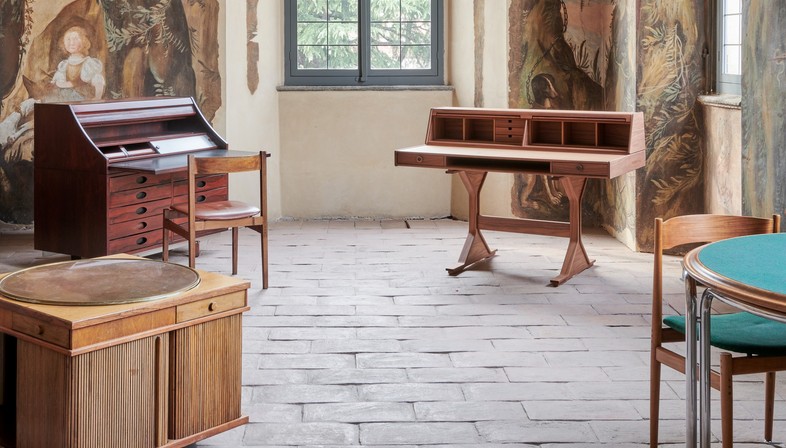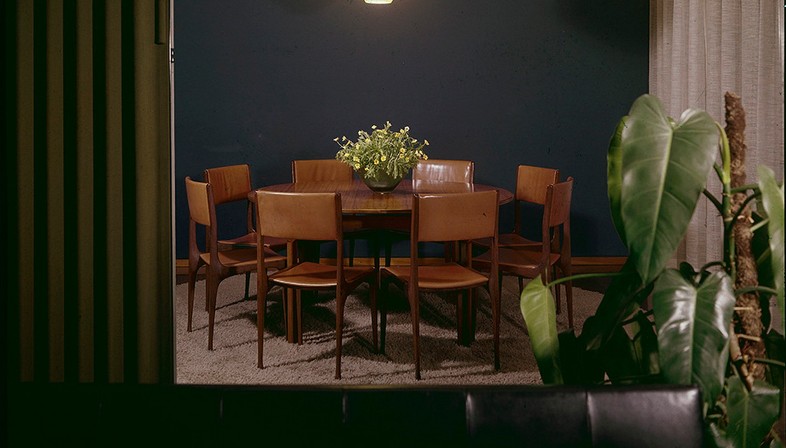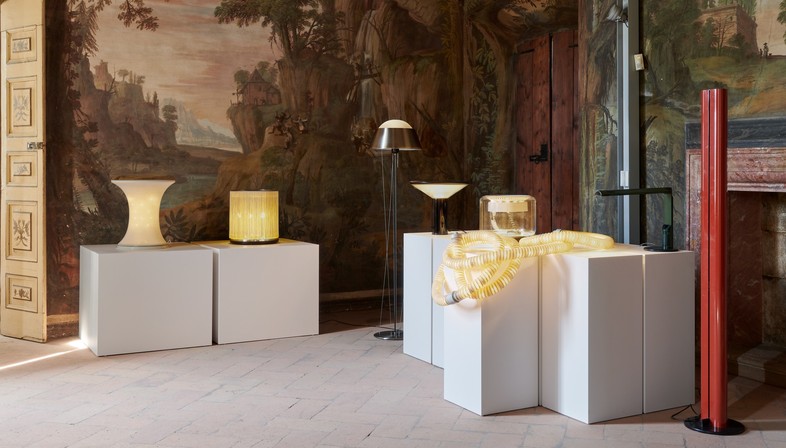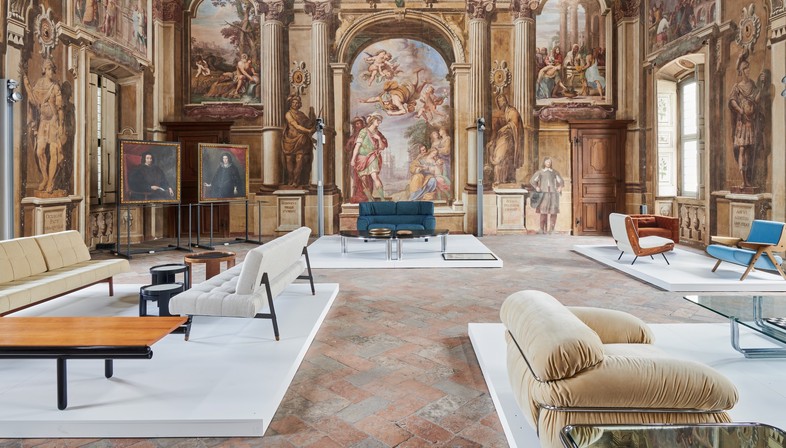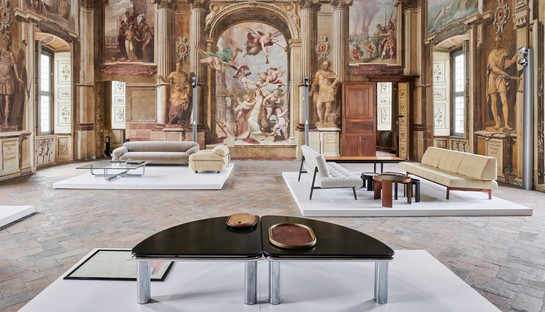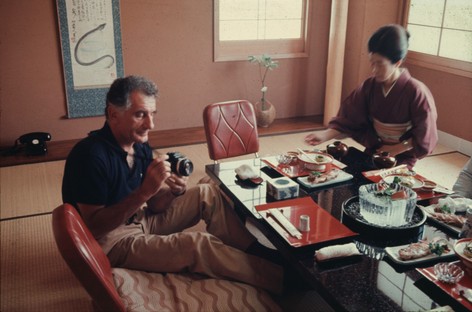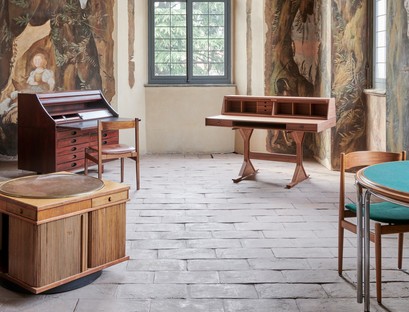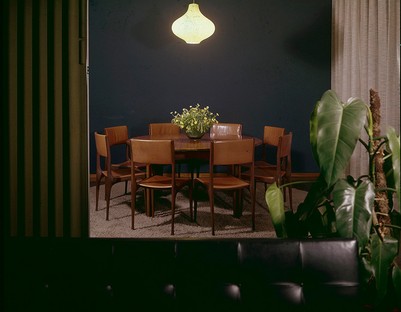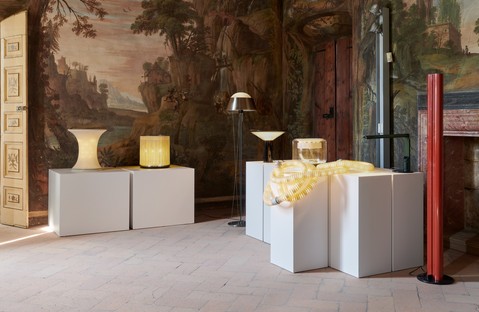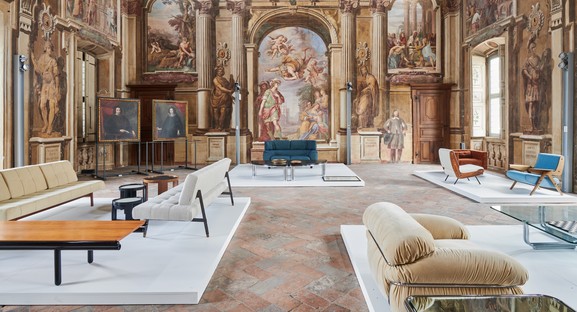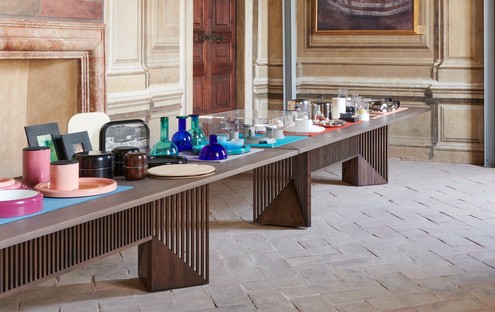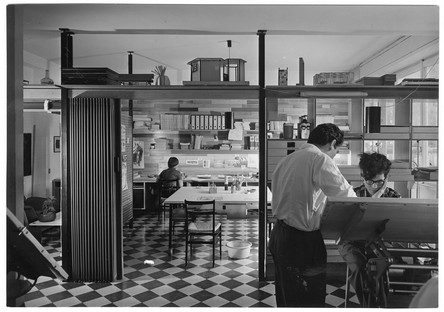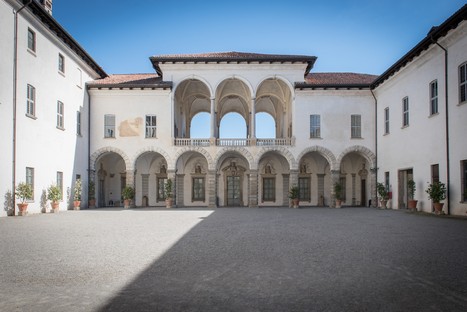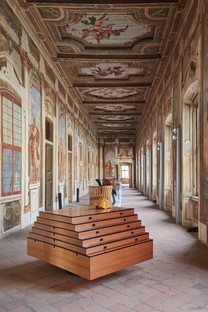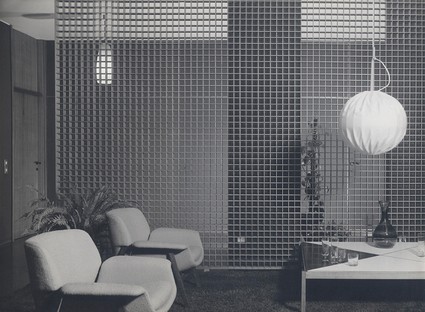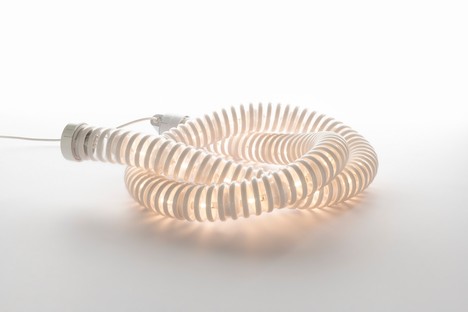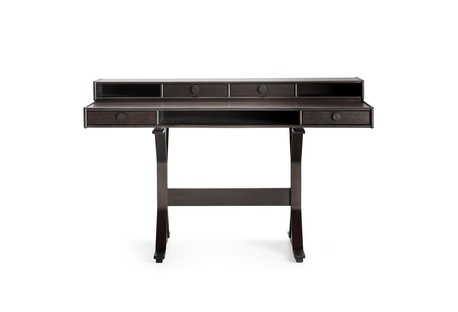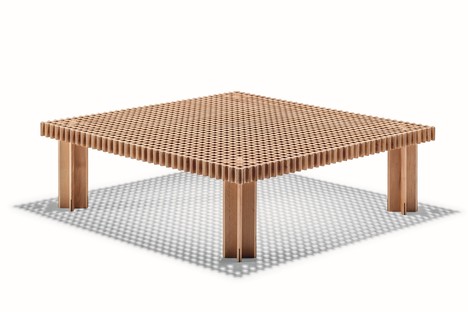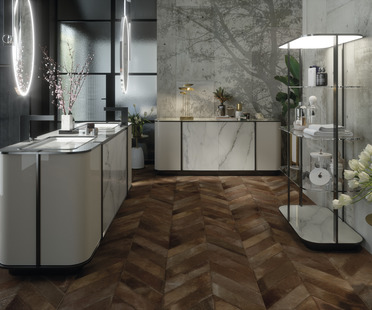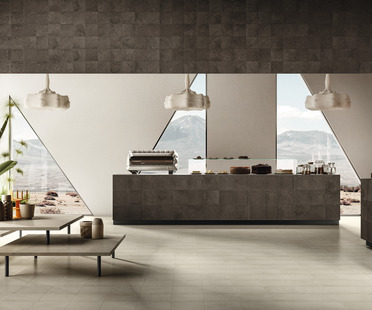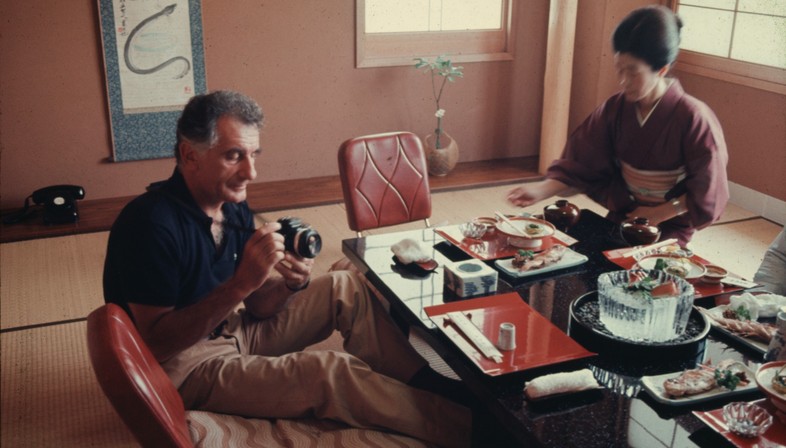
The announcement of the exhibition ‘Gianfranco Frattini: ieri, oggi, domani’ - which revolves around the work of the architect and designer, originally from Padua and Milanese by adoption, not to mention one of the founders of the Italian school of design - contains more than one piece of good news: first and foremost, it pays due tribute to an ingenious figure of our design culture who only received the recognition and attention he deserves within the past few years, thanks to his rediscovery - including in terms of research - by the greatly-missed architect Marco Romanelli, who organised an exhibition at the Triennale di Milano in 2018 together with Silvana Annichiarico. Another noteworthy element: the exhibition is curated by his daughter, Emanuela Frattini Magnusson, an architect and designer in her own right now based in New York who, together with her brother Marco, undertook the process of promoting her father’s archive and legacy. This - in a third piece of good news - has resulted in the ‘Studio/Archivio Gianfranco Frattini’ initiative, under which a digital platform has been set up to host the entire physical archive of drawings (over 9000, carefully preserved at the CSAC in Parma) and photographs documenting the architect’s work - all available for consultation by the general public. Last but certainly not least, the fourth piece of good news is the location where the exhibition is being held until 14 May: the enchanting Baroque complex of Palazzo Arese Borromeo in Cesano Maderno, whose local administration showed foresight in supporting the initiative so as to promote its identity as part of Brianza, which was so decisive for the development of great Italian design. It should come as no surprise, then, that the ‘Gianfranco Frattini: ieri, oggi, domani’ exhibition is being hailed as one of the truly unmissable initiatives of the spring of 2023, chock-full of high-profile events though it may be.
The exhibition offers an excursus through the many projects of Gianfranco Frattini (1926-2004), a student of Gio Ponti and his successor, as he traced a wholly original path of his own over the many prolific years he was active (he began working in Ponti’s studio as an apprentice in 1952, then continued under his own steam until the 2000s). Within the splendidly frescoed rooms of Palazzo Arese Borromeo, this exhibition curated by his daughter Emanuela offers visitors an opportunity to admire chairs, armchairs and upholstered pieces dating from the 1950s to the 1970s, original period pieces graciously lent by collectors or the family itself, desks, side tables and the like, but also crockery and vases, glasses and cutlery, and lamps - including the renowned Boalum, designed in 1970 with Livio Castiglioni, which entered the collections of major international museums and is still in production. “The idea came to my father as he was strolling around the garden,” says his daughter Emanuela, “when he saw the hose of the vacuum cleaner that the pool cleaner was using”. The modernity of that idea remains indisputable today, and this modernity runs as a common thread throughout Frattini’s oeuvre, as demonstrated by the continuous re-releases of his designs, produced in recent years by major furniture brands in Italy and beyond.
“It is always difficult to describe someone who’s close to you, and in my case, it is also tricky to separate the person I knew from his profession,” confesses Emanuela Frattini Magnusson, thinking back on the figure of her father. “The memory that I’ve always had of him is of an architect, perhaps due to invariably seeing him with pencil in hand, thoroughly engrossed in his work. He educated us - my brother Marco and me - through his choices and the objects he surrounded himself with, which surrounded us as well, instilling in us a sense of beauty derived from an intellectual coherence that I only came to understand later on”. He was a great traveller, and pursued a concept of quality and beauty that we still have much to learn from even today: “It was nothing to do with what we consider ‘luxury’,” continues Emanuela. “Amongst the most indelible memories I have of him are when he returned from his travels - which always offered a wealth of new ideas - opening his suitcases and pulling out everything from Wirkkala knives and Marimekko fabrics from Finland to ceramics and baskets from South America. He appreciated the elegant weaving of a Mexican basket just as much as he did a Japanese lacquer bowl, in that they were pure expressions of an artisanal and material culture that translates into beauty.
There is one final piece of good news associated with the exhibition in Cesano Maderno, unquestionably worthy of being highlighted: one of the rooms of the Palazzo plays host to Frattini’s interior design projects (given that he was an all-rounder as an architect, designing everything ‘from spoons to cities’), which are masterful in their coherence of conception and style, as they treated furniture as an integral expression of the architecture - not an addition, but part of an organic whole. The exhibition also features research carried out by two young researchers and graduating architecture students from the Politecnico di Milano - Susanna Beatrice Lubiana and Benedetta Patella - focused on Frattini’s interior design projects, which they will present in July as the final thesis of their academic course. “We consulted the CSAC archives and trawled through all the many interior designs for homes, nearly two hundred,” they say, “before eventually selecting eight - ranging from apartments with minimalistic solutions to vast villas - and we are reconstructing their structure and furnishings. We discovered one that has remained intact in Milan, along with Villa Rossini, owned by the gallery owner of the same name, in Briosco, Brianza”. The two students have undertaken their project with a passionate, competent and detailed approach, as can be seen in the display cases to be found in the exhibition. And this, too, is certainly good news.
Antonella Galli
Gianfranco Frattini: ieri, oggi, domani
Palazzo Arese Borromeo, Cesano Maderno (MB)
Until 14 May 2023
gianfrancofrattini.com
comune.cesano-maderno.mb.it
Captions
01, 03, 05-07, 10: setup of the exhibition with iconic pieces by Gianfranco Frattini in the rooms of Palazzo Arese Borromeo in Cesano Maderno, photos by Max Pescio.
02 Gianfranco Frattini on one of his trips to Japan. Courtesy of Studio Archivio Gianfranco Frattini.
04, 11 Apartment in Milan, 1957. Courtesy of Studio Archivio Gianfranco Frattini.
08 Gianfranco Frattini at work in his studio. Courtesy of Studio Archivio Gianfranco Frattini.
09 Palazzo Arese Borromeo, Cesano Maderno, Courtyard of Honour
12 Boalum lamp, a 1970 design by Gianfranco Frattini and Livio Castiglioni for Artemide, now re-released with LED light sources.
13 Bureau designed by Gianfranco Frattini for Bernini in 1957 under the name Modello 530. Now re-released by Ceccotti Collezioni under the name Nòs (‘walnut’ in Milanese dialect).
14 Kyoto table, designed by Frattini in 1974 and produced with cabinetmaker Pierluigi Ghianda. Re-released by Poltrona Frau in 2020.










